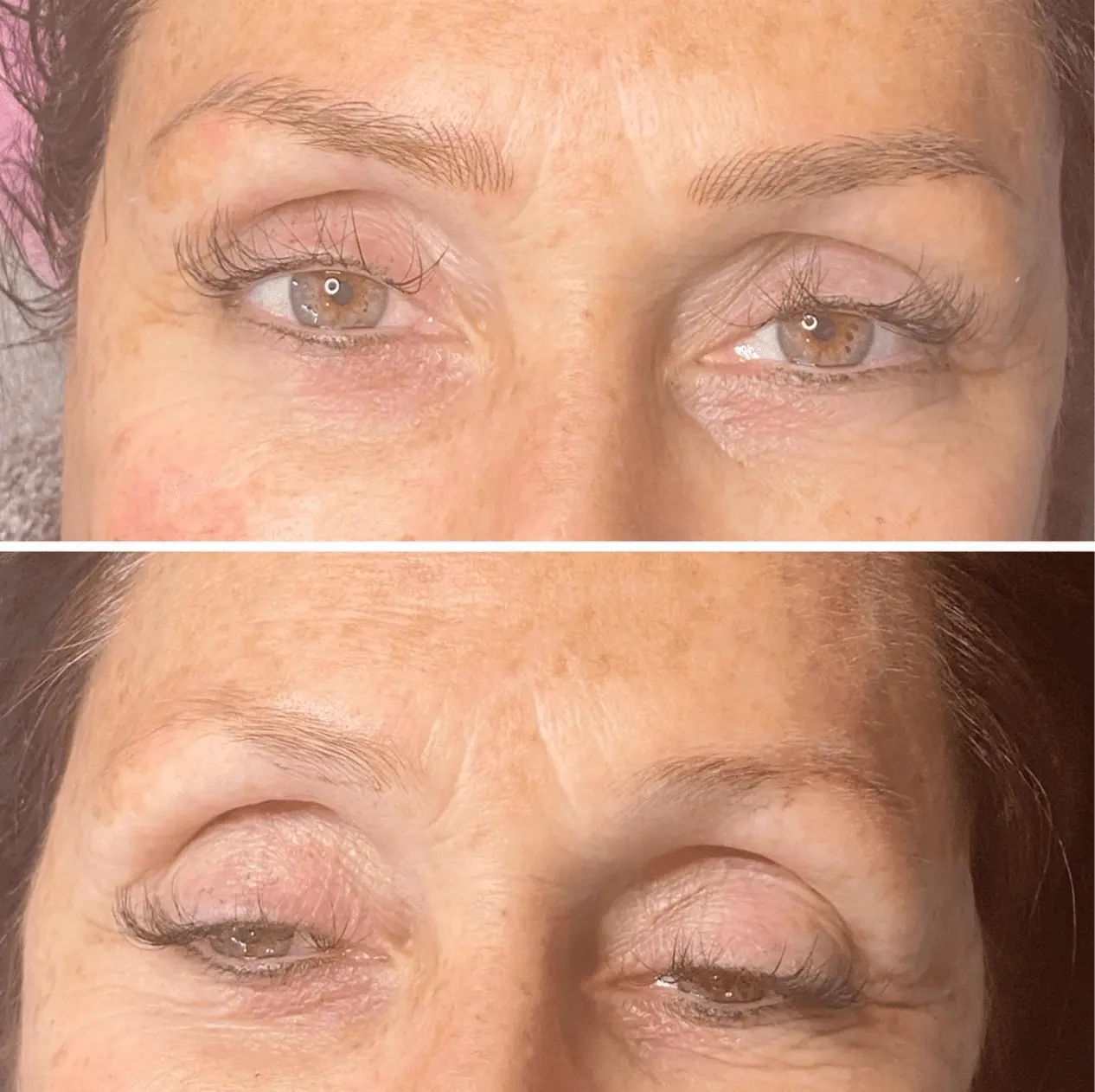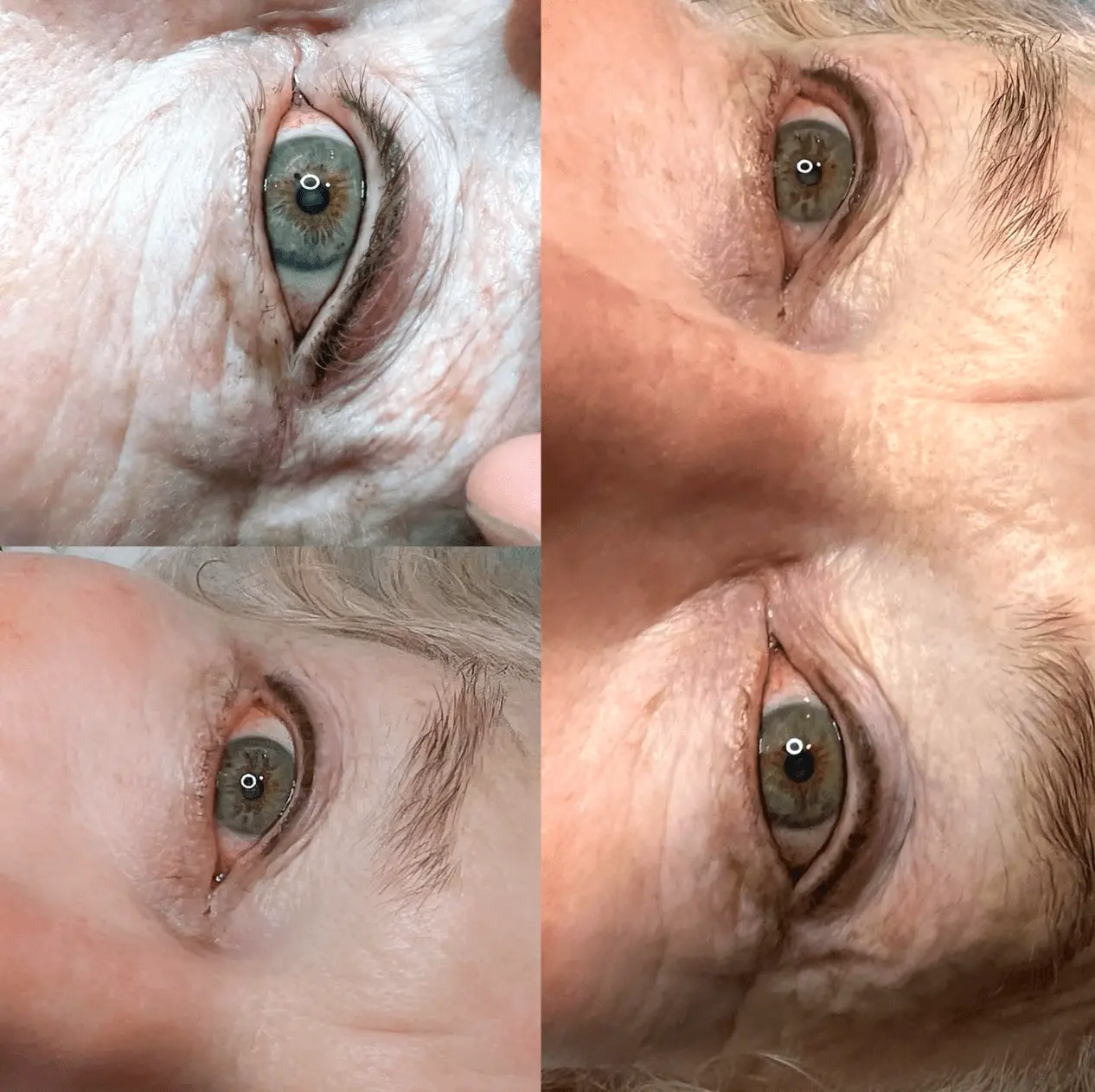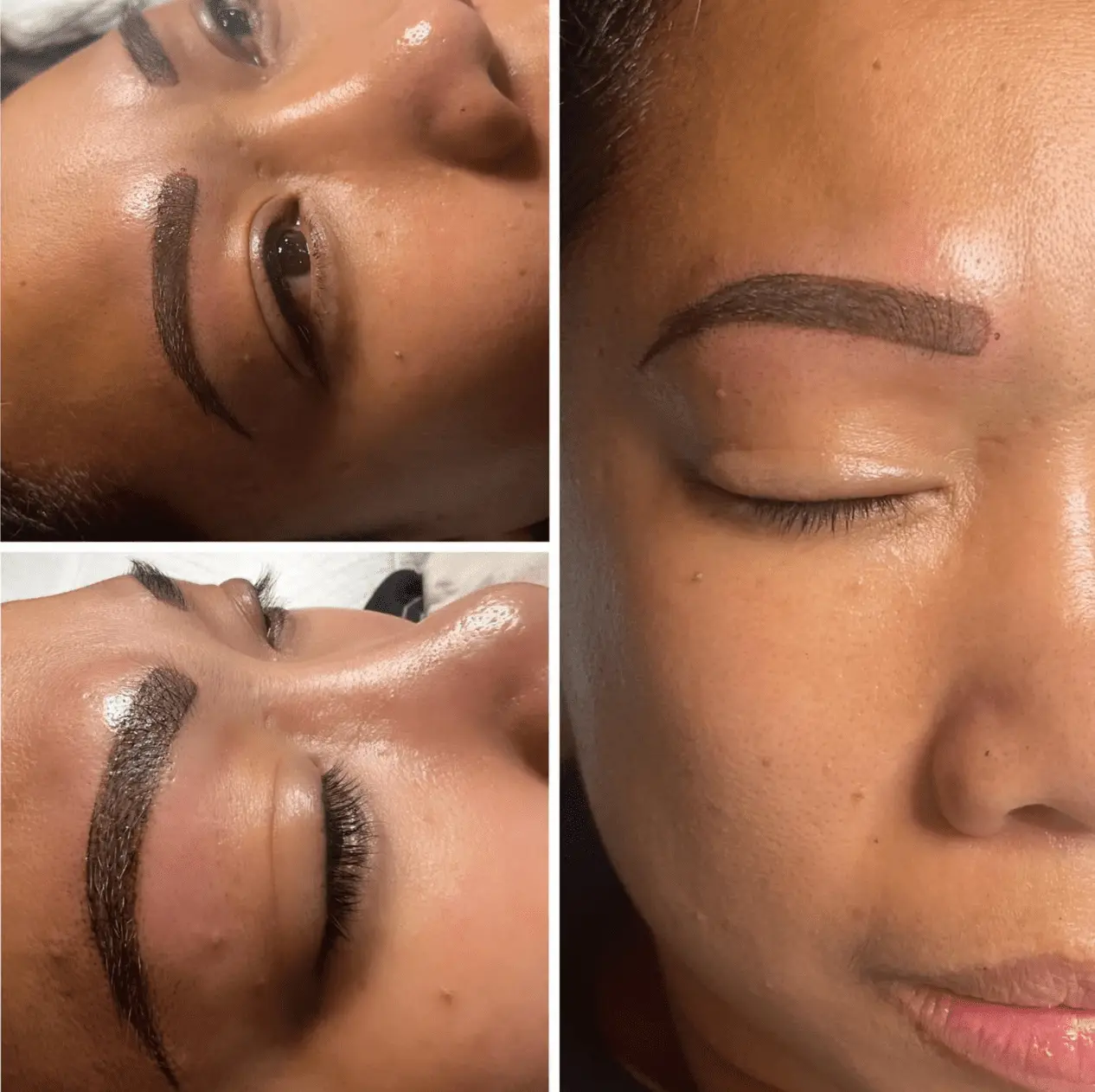What is saline tattoo removal?
Removing or lightening unwanted tattoos and permanent makeup involves using a specially formulated saline solution by and a digital tattoo machine. The technician follows the same method used for applying the tattoo, but this time, saline solution is implanted into the skin instead of ink.

Dries out the skin when implanted, causing the tattoo pigment to lift and be removed during the skin's healing process. A dried-out scab forms during the healing process and contains some of the tattoo pigment.
Comparison between saline removal and laser removal techniques
This method of removal is considered safer and gentler than laser removal, being an all-natural and FDA-approved solution. It allows the area to be re-tattooed after the skin heals, making it worth considering before opting for laser removal.
Potential side effects of laser removal include:
- Risk of scarring
- Skin stains caused by certain pigments with iron oxides are difficult to remove.
- This product is effective on black pigments, but less so on other colours, such as red, green, yellow, and white, that combine to make brown.
- Pigment changes laser treatment, making it more deeply embedded and challenging to eliminate.
There are benefits to using saline removal solution
- Botched pH is gentle during treatment, as the formula closely resembles healthy skin and includes Aloe Vera to help the solution soak into the skin without causing excessive trauma.
- Skin treated quickly dries out, forming a thin scab, which helps minimize inflammation, scarring, and risk of infection.
- During the healing process after undergoing treatment, unwanted grey or orange eyebrows will appear shades of brown, resulting in a potentially more aesthetically pleasing appearance.
- Once 48 hours have passed, clients can shower and utilize the prescribed aftercare serum on the treated skin to promote a more comfortable healing process with reduced scabbing.
Consider Saline Removal for your tattoo removal needs
- Reduced irritation and inflammation lead to a decreased risk of scarring.
- This product is effective on a variety of skin stains and colours, including black and brown (red, white, yellow, and green).
- Has been specially designed to rapidly dry out the skin, reducing the chance of the body's inflammation and irritation response. The resulting scab will be thin and dry rather than thick, damp, or inflamed.
How many sessions are needed?
Various factors such as skin condition, health profile, healing ability, pigment type and colour, placement depth, technique, and aftercare compliance can affect the results of pigment lightening.
It is recommended that a new tattoo be removed as soon as possible. Tattoos less than 2 months old may not have fully set in the skin yet, and if they are less than a year old, there may be minimal skin staining. This process may require up to 3 sessions.
Multiple tattooing sessions, especially with poor-quality pigment like iron oxide, can result in skin saturation and staining. New pigment may not hold well over older, deeper pigment, often requiring at least three sessions to correct.
Can you provide more information about the removal process?
- Removing, improving, or lightening pigment may require multiple sessions.
- Tattoos that are mature or saturated may exhibit a slow initial response.
- After three treatments, we will better understand the pigment removal process.
- Pigment may appear darker initially before lightening, particularly if it has been deeply implanted.
- Pigment located closer to the surface is easier to remove.
- The brown pigment consists of a combination of black, white, yellow, red, and green. When black pigment fades, other colours become more prominent, leading to the appearance of warmer tones or greying brows.
- The tattoo removal process is complex and variable, making it difficult to predict how much pigment will be removed during each visit or how many visits will be necessary.

Saline removal is not recommended for individuals with certain conditions
- Please avoid using the sauna if you have any open acne spots or wounds or if you have an active herpes outbreak.
- Allergies to Aloe Vera
- Common skin conditions may include warts, fungal infections, or other acute inflammation.
- Skin malignancies raised moles
- Individuals taking blood thinning medication or Hepatitis B are advised to take note.
- Unstable diabetes
- Active keloids
Individuals with certain conditions should avoid saline removal procedures
- They may have areas of hyper-pigmentation or hypo-pigmentation on their body.
- Issues with blood clotting and healing may be present.
- Low white blood count can result in poor immunity.
- Conditions such as lupus, vitiligo, and immune system disorders can potentially trigger attacks or activity.
It is important to remember to take care of your skin and protect it from the sun
- Individuals who are prone to hyper-pigmentation should follow advice for the first 48 hours after a procedure. Keeping the scab and surrounding skin from drying out is crucial to prevent hyperpigmentation.
- Apply Cavilon cream every 2 to 3 days until the skin returns to its normal colour.
I am concerned about the possibility of being allergic to
A patch test is necessary before the saline tattoo removal Melbourne if there is a risk of developing an allergy.
Will it be painful?
During removal, topical numbing cream will be applied 20 minutes beforehand to minimize discomfort. Pain levels will generally be mild to none, with some mild stinging when the saline solution enters the skin, but it will quickly fade.
When is the next available appointment for my saline removal session or re-tattooing?
- It is recommended to book a course of 3 treatments initially to assess the ease of pigment removal.
- The treatment schedule consists of four sessions, with each session spaced eight weeks apart, except for the last session, which is scheduled 12 weeks after the third session.
- A longer period is allowed between each treatment if the skin has not fully regained its normal colour.
- After undergoing saline tattoo removal Melbourne, it is recommended to wait at least 4 months before getting a new tattoo to avoid any potential interference with the results.
Recommendations for the first 48 hours post saline removal treatment include resting and following prescribed aftercare instructions.
- After the treatment, redness around the area typically reduces within an hour or two. The redness within the treated area turns brown as the skin dries out. It is important for the treated area that 36 hours must be allowed for the treated area to completely dry out. In general, the area is usually dry enough to touch within the first few hours.
- It is recommended to only touch with clean hands and avoid touching for at least 48 hours for optimal results. Keeping the skin dry is important for achieving the desired outcome.
- During the initial drying-out phase, avoid using any other aftercare products. Keep the treated area dry and sweat-free for 48 hours. For lip liner treatments, limit movements to a minimum and keep them small.
After the de-salting procedure, it is important to follow the care instructions
- After treatment, the area may become dry and develop a light scab, which may contain visible pigment.
- Apply Cavilon barrier cream on and slightly around the scab for up to 4 days to create a soft film over the affected area.
- When washing and showering, avoiding rubbing the area and gently holding a clean tissue on the scabs to dry them out after any wetness is recommended.
- Avoid getting the area too wet or swimming while the scabs are present.
- Depending on the area treated, the scab will typically remain attached for 5 to 14 days.
- Excessive movements can cause the scab to crack, hindering the healing process.
- It is recommended that the scabs not be removed.
Individuals with hyper-pigmentation should prevent dryness in the healing area by using Cavilon cream regularly. For those with darker skin tones (brown to black), applying a rich oil like Shea butter is recommended after the scab has healed.
What can I expect after the scabs fall off?

- The pigment may appear lighter or different during the first 1-8 weeks after the procedure. These initial changes are not considered the final results, as the skin is still healing, and the pigment is still settling.
- Makeup can be applied to the area if desired.
- Please handle the area with care, avoiding exfoliation and excessive sun exposure.